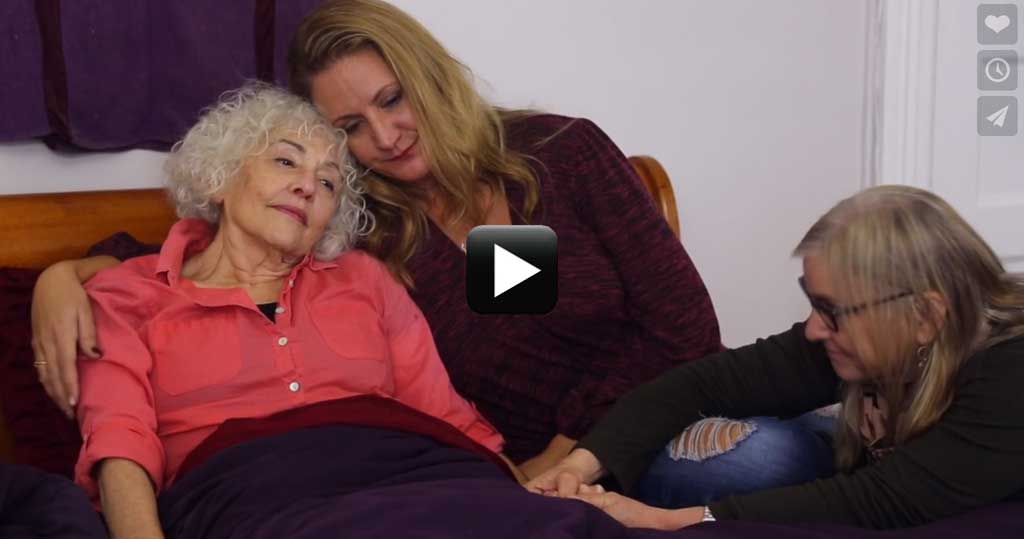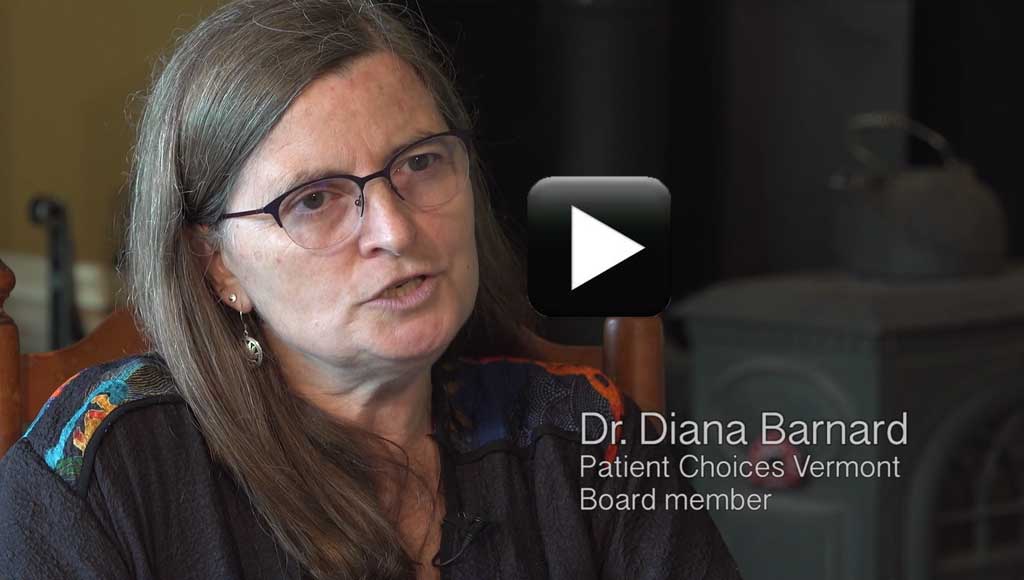Dr. Diana Barnard speaks about end-of-life choice
Ellen McKay Jewett, guest speaker
Ellen McKay Jewett, guest speaker
Community presentation February 20,2024.
Introducing Vermont's Act 39
If you are new to medical aid in dying, start here.
Remembering Willem Jewett, Attorney and former Vermont State Representative from Addison County |
Act 39 Signing May 20, 2013 |
|
|
|
PCV's Living While Leaving Video Series
Patient Choices Vermont is pleased to sponsor the Living While Leaving video series to share the heart-felt and compassionate stories of Vermonters who have used medical aid in dying.
|
Karen Oelschlaeger's Story
“In February 2018, symptoms became so severe that I went to the ER. Three months later, I was diagnosed with a type of stomach cancer extremely rare in someone my age. I was 33.” - Karen Oelschlaeger. (Karen died on April 19, 2021 exercising her option to use medical aid in dying under Act 39.) |
Dee Allen's Story
Vermont legislators may remember Dee Allen, former Resolutions Clerk at the Statehouse. In August 2020, she learned that she had a rare neurological condition. She requested aid in dying under Vermont’s Act 39 and passed away on December 21, 2020. |
|
|
|
See Your Stories for several more in-depth accounts.
Remembering Al Gillotti |
ACAMAID.org | Great videos and guidance for both patients and caregivers |
|
Al Gillotti used Vermont's Act 39 because the prognosis was that his brain tumor would continue to grow and it would only become worse. He believed death is part of life and wanted his leaving to be joyful rather than stressful. He did not want to end his life in palliative sedation. He wanted to meet the beast on his own terms.
|
The American Clinicians Academy on Medical Aid in Dying has launched a website which includes some great videos and guidance for both patients and the medical community. In particular, we would recommend this video, which answers the question “What is it like on the day you take your medication?”
Aid in Dying at the Bedside |
Eric Stevens' Death with Dignity
The two films (below) are the second in our series... They feature a dialogue with wife and mother Peggy Stevens and daughter Samantha Stevens regarding Eric Stevens, husband and father. The interview is conducted by Betsy Walkerman, PCV President. These films were created by Stephen Kastner at DesignWise Studios, videographer and editor with music by Eric Stevens (and his band in Part 2).
|
Part 1
|
Part 2
|
|
|
|
Dick Walters, PCV Co-founder |
Maggie Lake - Putney, Vermont |
|
The first video in the series (below), is an interview that spans three generations: with Dick's wife, Ginny Walters, co-founder of PCV, her daughter Betsy Walkerman, President of PCV and daughter/granddaughter Karen Walkerman. It is the story of Dick Walters, co-founder of PCV, his relentless advocacy and his journey at the end of his life using medical aid in dying.
|
On January 17, 2015, Maggie Lake became the third person in Vermont to make the choice to end her life by taking a combination of drugs, prescribed by her physician under the conditions laid out by Act 39. Click here for the full story.
|
|
|
|
|
Prescription for Peace of Mind: An option for the terminally ill, a documentary by Karin and Bill Schwanbeck
Featuring Dr. Diana Barnard, Peggy Stevens and PCV President Betsy Walkerman, along with patients, doctors and others in Connecticut. |
PCV video explaining why the Act 39 residency requirement should be eliminated.
The lawsuit described in this video has been settled, enabling Lynda Bluestein of Connecticut to access medical aid in dying in Vermont. On May 2, 2023, final passage of House Bill 190 accomplished the goal of making all medical services in Vermont available regardless of a person's residency. |


